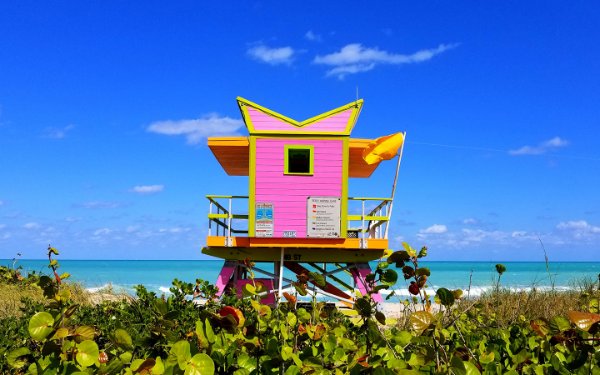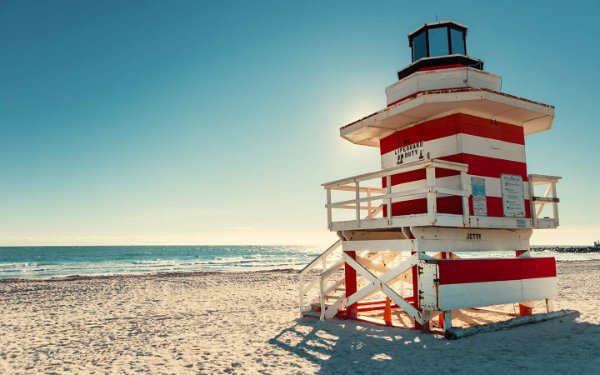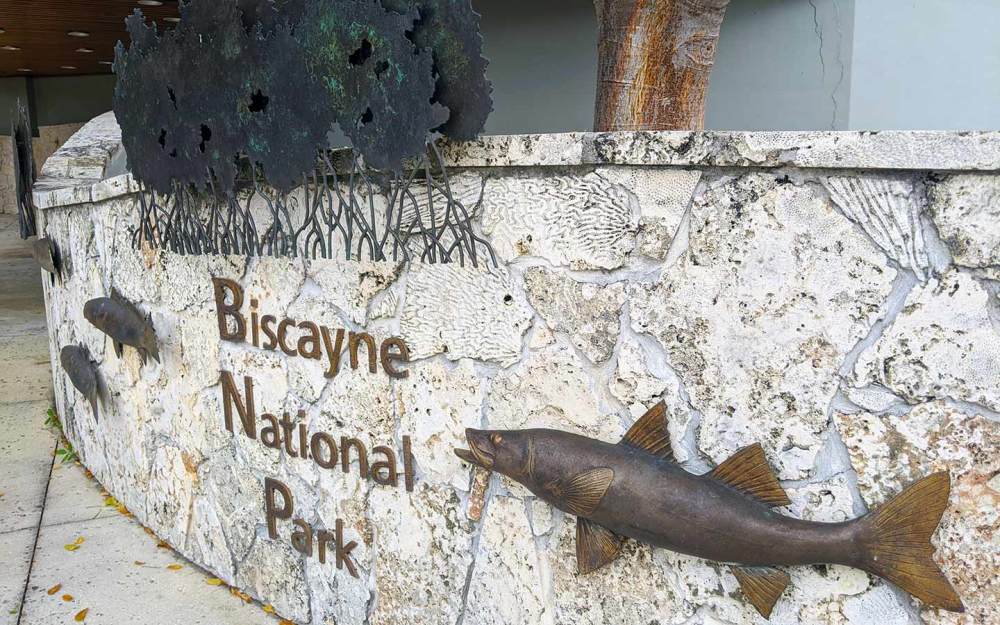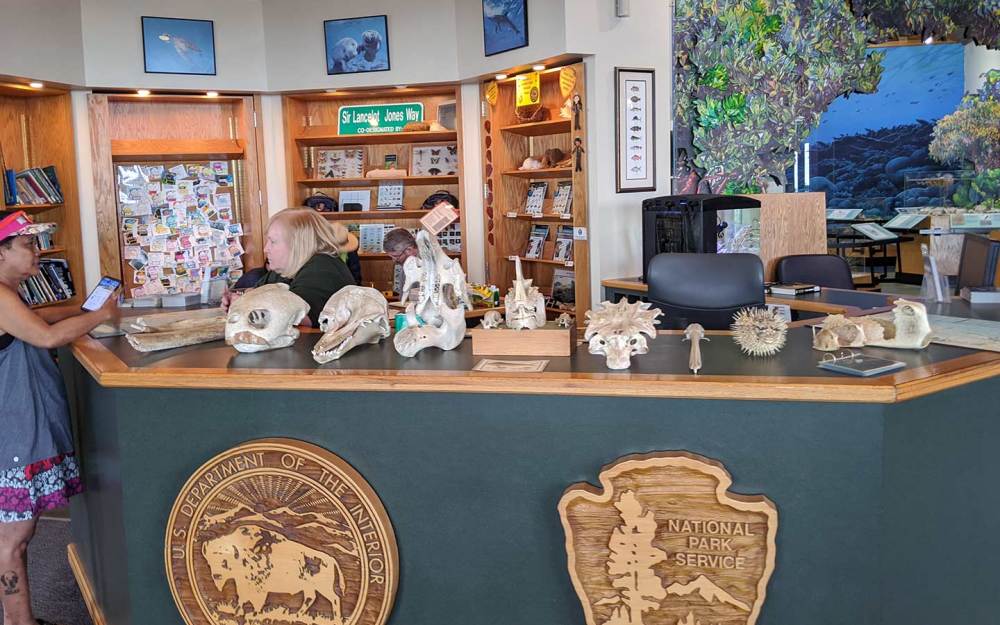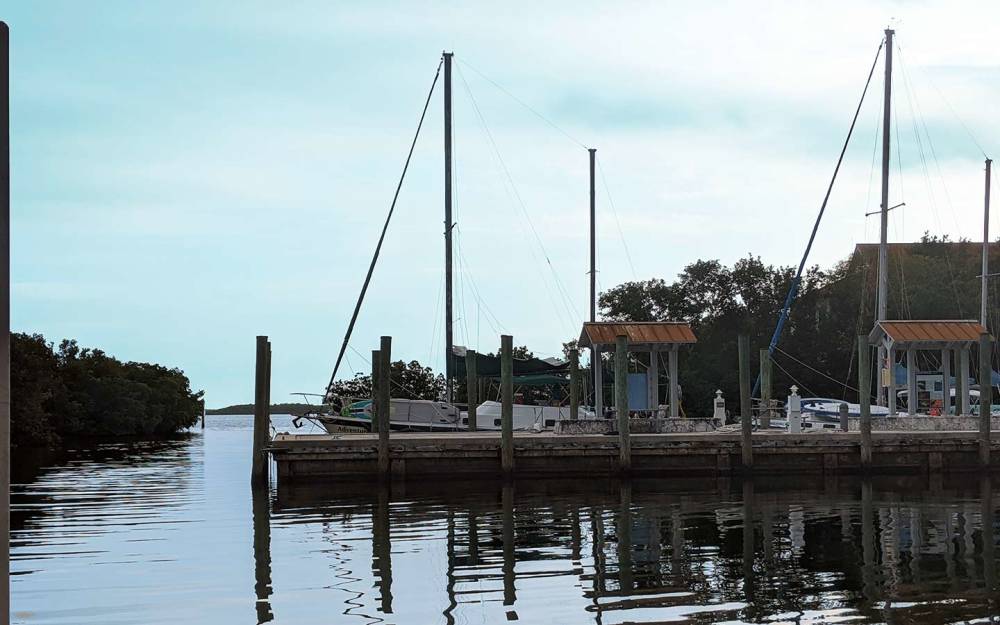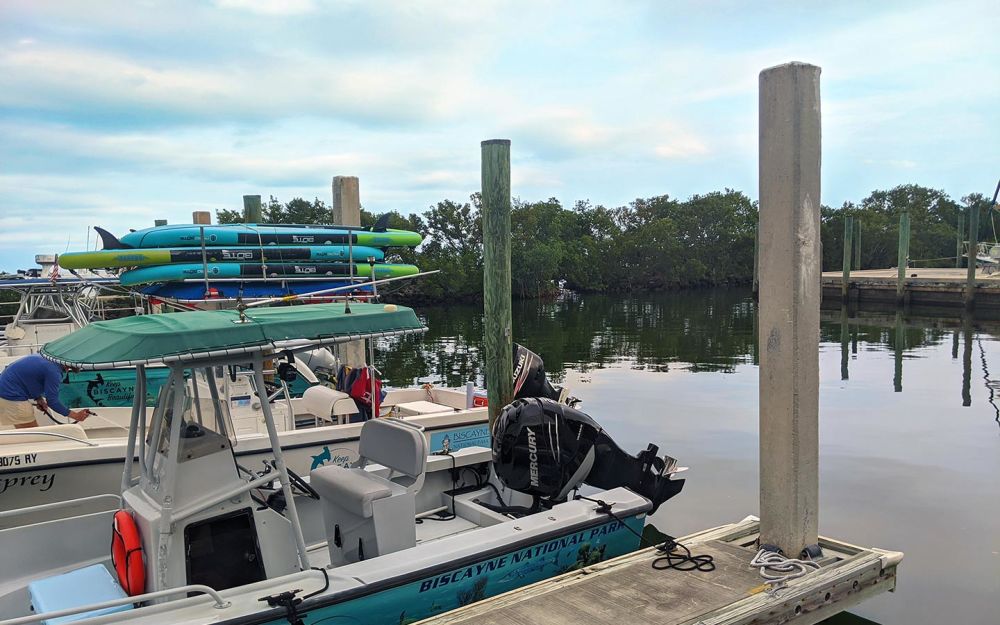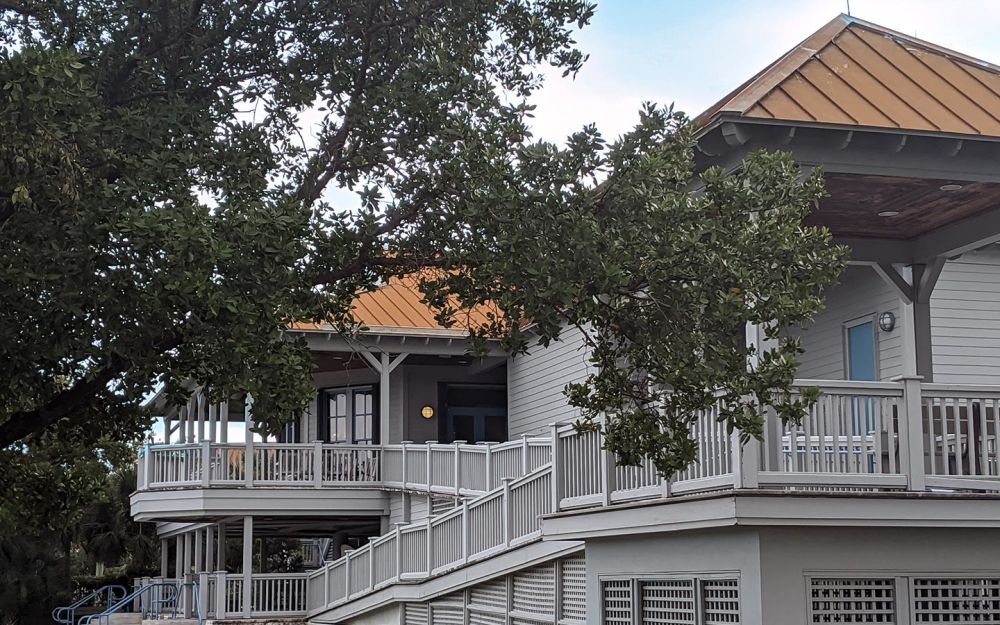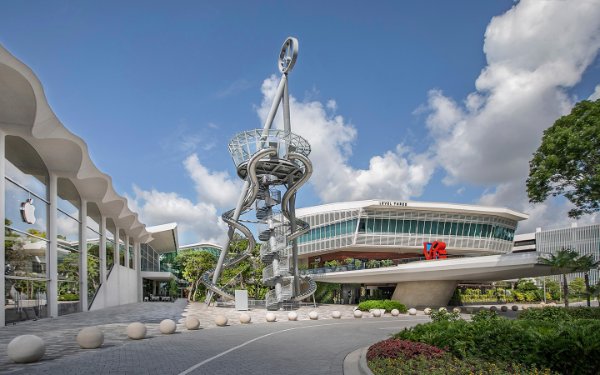
Biscayne National Park
Outdoor Experiences
Water, water everywhere. That’s Biscayne National Park, the largest marine sanctuary in the U.S. National Parks system. Ninety-five percent of its nearly 173,000 acres is in Biscayne Bay and the Atlantic Ocean, making it a world-class aquatic wonderland within an easy drive of just about anywhere in Greater Miami & Miami Beach.
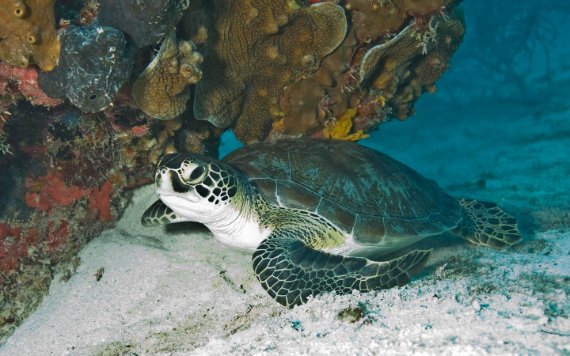
Renowned for its biodiversity, Biscayne National Park is made up of four ecosystems: coastal mangrove hammocks, Biscayne Bay’s shallow lagoon waters, coral limestone keys and the third-largest offshore reef in the world. These ecosystems sustain thousands of wildlife species, including 20 that are threatened or endangered, such as the manatee, hawksbill sea turtle and American crocodile. Part of the Biscayne Birding Trail, the park also boasts more than 110 species of birds, including the roseate spoonbill, wood stork and the ultra-rare mangrove cuckoo. The area is also home to 600 native fish species.
Check out the Visitor Center
Since most of the park is accessible only by boat, first-timers should stop at the Dante Fascell Visitor Center in Homestead. The center has a museum and art gallery along with information about the park. It’s also the starting point for the scenic Convoy Point Jetty Walk through the surrounding bayside hardwood hammock. The visitor center is open from 9 a.m. to 5 p.m. except for Thanksgiving, Christmas and New Year's Day.
All guided boat, paddle and snorkel eco-adventures within the park depart from the visitor center and are handled by the Biscayne National Park Institute, the park’s only authorized onsite outfitter. To ensure your spot, book your half-day or full-day tour ahead of time on the institute's website.
Explore Biscayne National Park By Water

Paddle the Park
Whether you choose a kayak, canoe, or stand-up paddleboard, the best way to experience the coastal wilderness of Biscayne National Park is on the water.
A favorite excursion is the guided paddle tour of Jones Lagoon, a secluded, mangrove-fringed lagoon at the southern end of the park. Yellow stingrays, loggerhead turtles, juvenile bonnethead sharks and an otherworldly meadow of Cassiopeia (upside-down jellyfish) are just a few of the wildlife you may encounter. If you’re a birder, keep your eyes peeled for white-crowned pigeons, and bring binoculars to observe roseate spoonbills and frigate birds in their rookeries. Are you planning to explore on your own? The 7-mile expanse from the mainland to Elliott Key is traversable but best undertaken by experienced kayakers.
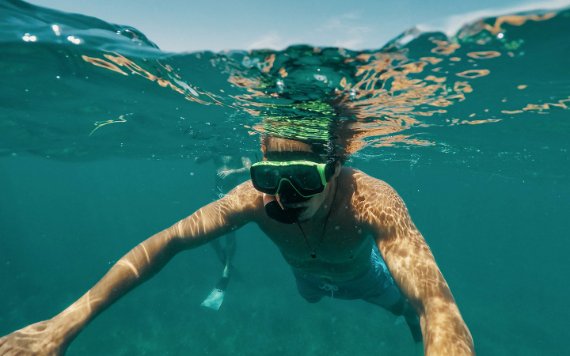
Snorkel the Florida Reef
Some of the park’s greatest sights lie beneath the water. Explore colorful living reefs and a coastal mangrove habitat, and visit coral-covered ships that met their fate on the Florida reef. The Institute offers several guided snorkeling and scuba trips.
Anemones, green moray eels and schools of technicolor fish, such as rainbow parrotfish and angelfish, are just a sampling of the reef dwellers you might uncover. Be aware that ocean conditions change, and you may end up snorkeling in the calmer, mangrove-fringed waters of the bay.
Are you curious about exploring the watery tombs of historic wrecks? From May through August, the Institute sometimes offers guided snorkeling tours of the Mandalay or the Arratoon Apcar, the shallowest of the six mapped shipwrecks on the Maritime Heritage Trail. If you’re a certified scuba diver, charter tours outside the park offer diving excursions and private charters to the deeper shipwrecks on the trail and the reef.
Exploring the Florida Keys
Two of the northernmost islands of the Florida Keys archipelago are located within Biscayne National Park.
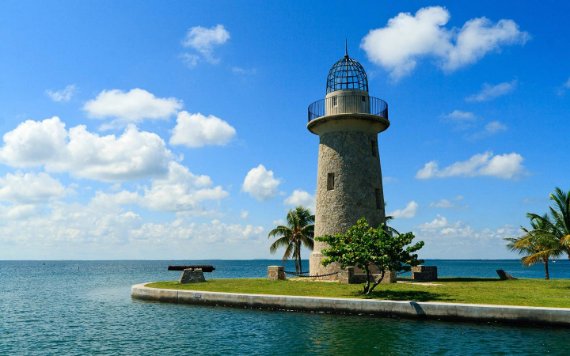
A powerboat tour is a good way to see scenic Boca Chita Key, an islet that’s home to coconut palms and a smattering of other native flora as well as historic limestone structures. While you’re there, stroll along the short path through a mangrove hammock or climb the island’s landmark lighthouse to take in cinematic vistas of the Atlantic.
You’ll also need to go by boat to explore Elliott Key, the largest of the park’s islands. Once you’ve wandered along the one-mile loop trail, hit the six-mile road (also called Spite Highway) down the center of the island to see a maritime forest where mangroves, buttonwood, gumbo-limbo and torchwood, the host tree of the endangered Schaus’ swallowtail butterfly, abound.
Along with the many tours the Institute offers, tours are also available from commercial operators. See the list on the National Park Service website. For the full land and water experience, opt for a sailboat tour to Boca Chita followed by a visit to Elliott Key or Adams Key, where you can kayak, paddle or snorkel the translucent bayside waters and explore the diverse soft coral habitats.
Camping
Pitch a tent and get lulled to sleep by warm ocean breezes at either Boca Chita Key or Elliott Key. Both islands offer campgrounds for tent site and boat-docking fees from $25-$35. See the National Park Service site for reservations. Campers take note: If you don’t bring it, you won’t have it. The campsites are charmingly primitive. Aside from toilet facilities on both islands, you won’t find any amenities, so pack water, food and supplies. Water and showers are available only at the Elliott Key campsite.
If you’re up for a group adventure, check the Institute’s website for seasonal package trips that combine history, sailing, paddling, hiking and camping.
Boat Launches And Nearby Marinas
The Dante Fascell Visitor Center has no marinas or boat ramps (it does have a kayak, canoe and paddleboard launch), but you can launch boats from several nearby public access points that flow into Biscayne Bay:
- Herbert Hoover Marina at Homestead Bayfront Park (feeds directly into Biscayne National Park) at 9698 SW 328th St., Homestead, FL 33033.
- Black Point Park & Marina (ideal for access to Boca Chita and Elliot Key) at 24775 SW 87th Ave., Miami, FL 33032.
- Matheson Hammock Marina near Coral Gables at 9610 Old Cutler Road, Miami, FL 33156.
- Crandon Marina on Key Biscayne at 4000 Crandon Blvd., Key Biscayne, FL 33149.
Planning A Biscayne National Park Trip
Getting To Biscayne National Park
Depending on traffic, the drive from Downtown Miami could take anywhere from one hour to 90 minutes. From the Florida Turnpike, take Exit 6/Speedway Boulevard and go left on Southwest 328th Street to the visitor center. The NPS site has more-detailed directions, including the route from US Highway 1.
The Homestead National Parks Trolley runs weekends from late November through April and goes from Downtown Homestead to the Dante Fascell Visitor Center.
On your way to the park, stop by the Tropical Everglades Visitor Association and get more information about everything you can see and do in the area.
The Best Time To Visit Biscayne National Park
While Miami enjoys mild winters, each season offers you a different experience at Biscayne National Park.
- The water is clearest in the coldest months, but the park will be busier. If you want to spend a lot of time in the water, a 3-mm wetsuit will keep you comfortable longer while you’re snorkeling, swimming or diving.
- Thunderstorms are common in the summer months, so if you plan to visit in these less-busy months, return to land before the afternoon storms begin and check weather forecasts.
- Fall through spring brings excellent sailing weather, but the same winds that are great for sailing can make visibility less-ideal for snorkeling or diving.
- Campers in March, April and November enjoy warm weather with relatively low humidity, but September remains the least-crowded month, so if you want solitude, that’s your best bet.
- Holiday weekends can get busy on the water. These are not the best days for taking out kayaks, canoes and paddleboards.
Good to Know
- The glorious Miami sun will make you thirsty, so make sure you have at least one gallon of water per person per day, especially at Boca Chita Key, which has no fresh water.
- No matter the season, you will need mosquito repellent. Be sure to get one containing DEET. If you plan to camp, pack incense-style mosquito repellent, too.
- Wear reef-safe sunscreen and bring enough to reapply it every two hours (more if you’re in the water).
- Fishing of any kind in Florida, whether from the shore or a boat, requires a license.
- Paddlers should have a float plan and make sure someone not paddling with you knows it.
- Only Elliott Key and the Dante Fascell Visitor Center allow pets.
- Make reservations in advance for campsites, guided tours and watercraft rentals, especially in the cooler months.
By: Kate Fox | November 10, 2023



